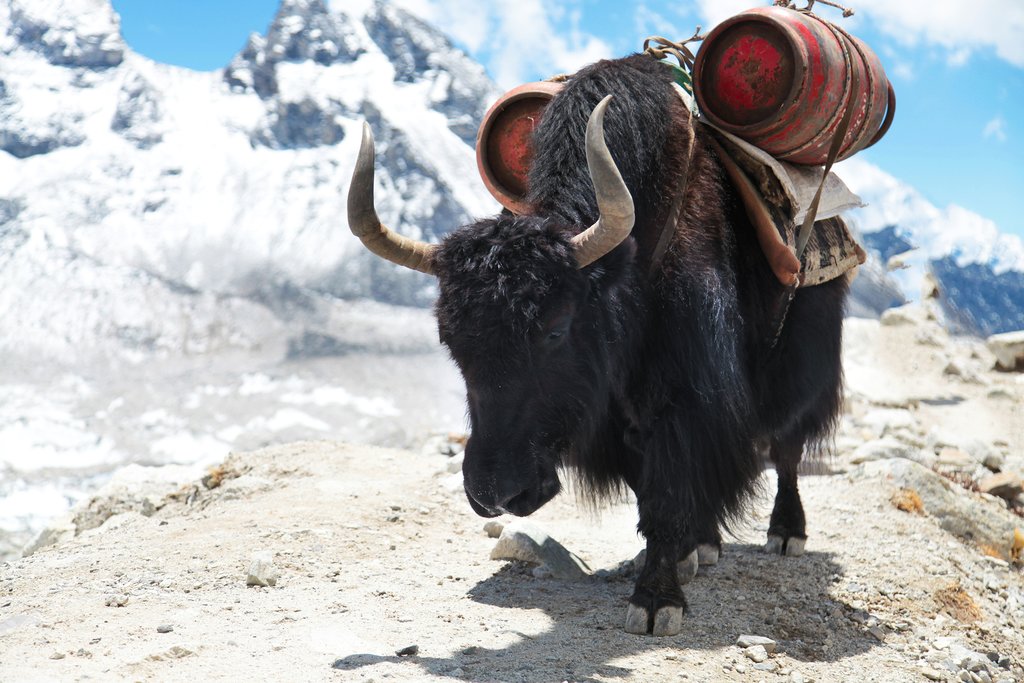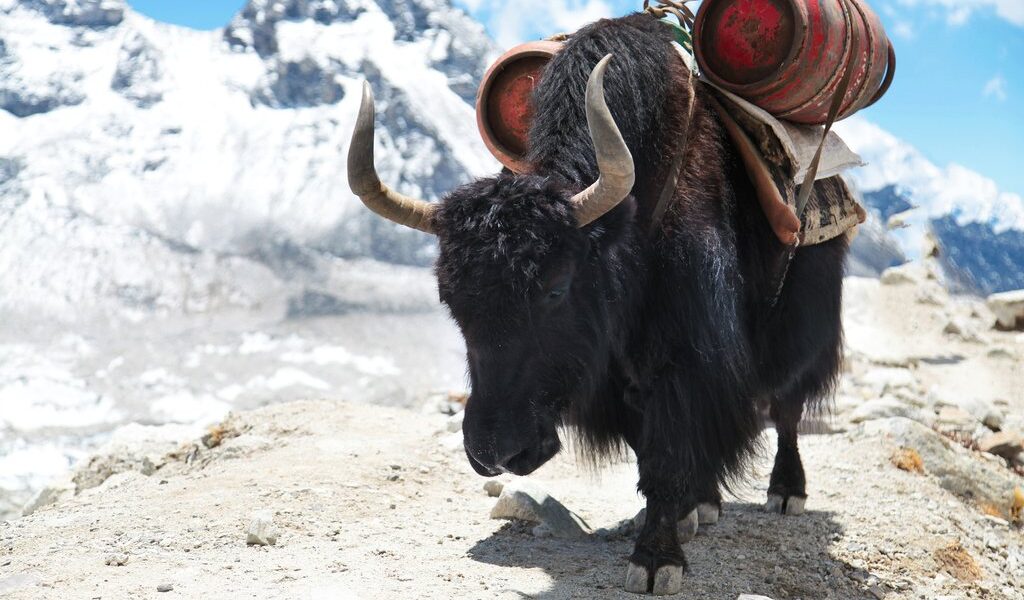
October is the most popular month for trekkers to visit Nepal. Conditions are pretty reliable, with crisp, rain-free skies offering excellent mountain views. Crowds are at their peak, however, and the Everest Base Camp Trek is the most popular in the country. Advance planning—as far enough in advance as possible—is important when traveling to the Everest region in October.
## Weather in Nepal During October: A Detailed Overview
October in Nepal marks a transition, a welcome departure from the monsoon season. As the heavy rains recede, they leave behind a landscape refreshed and skies that are typically clear and inviting. The oppressive humidity that characterizes the preceding months begins to dissipate, making it an ideal time for trekking and exploring the diverse regions of this breathtaking country. However, it’s important to remember that while the monsoon’s grip loosens, the possibility of rain, particularly earlier in the month, still exists, though it is usually infrequent and short-lived.
In Kathmandu, October still brings relatively warm temperatures. It’s a comfortable warmth, conducive to exploring the city’s vibrant culture and historical sites. However, as you ascend into the higher altitudes of the Everest region, a stark contrast in temperature becomes evident. The air becomes crisper, and the need for warmer clothing becomes paramount.
Namche Bazaar, a vital acclimatization stop on the famed Everest Base Camp (EBC) trek, offers a clear example of the temperature shift. At an elevation of 11,290 feet (3440 meters), the average low temperature in Namche Bazaar during October hovers around a chilly 35°F (2°C). In contrast, the average high temperature reaches a milder 53°F (12°C). Trekkers should be prepared for colder conditions as they climb to even greater heights beyond Namche Bazaar. Higher elevations will, unsurprisingly, bring significantly lower temperatures, often dipping well below freezing, especially at night. Therefore, packing layers and ensuring adequate insulation are crucial for a safe and enjoyable trekking experience.
## Crowds and Costs: Navigating Peak Season in Nepal
October is undeniably the peak season for trekking in Nepal. This popularity directly influences both the costs associated with travel and the density of trekkers on the trails. The EBC trek, being the most sought-after trekking route in Nepal, experiences a particularly high influx of visitors during this period. Expect to share the trails with numerous other adventurers, all eager to witness the grandeur of Everest. The feeling of complete solitude on the trail is unlikely during October, as the paths become bustling with activity.
Given the high demand, teahouses along the EBC route and other popular treks fill up rapidly. Securing accommodation can become a challenge, especially if you are trekking independently. This is where the value of a reputable and experienced guide becomes evident. A knowledgeable guide will not only navigate the trails with expertise but also ensure that you have a reserved bed in a comfortable teahouse each night. They can also assist in managing logistical challenges that may arise due to the high volume of trekkers.
Flights from Kathmandu to Lukla, the gateway to the Everest region, are also subject to high demand during October. These flights are essential for most EBC treks, and seats fill up well in advance. Therefore, it is highly recommended to make your travel arrangements, including booking flights, as early as possible. Procrastination can lead to limited options, potentially requiring you to be flexible with flight timings or compromise on the quality of accommodation. Booking early provides the best chance of securing your preferred flights and lodgings.
## Exploring Recommended Routes in the Everest Region
If trekking the classic EBC route is your primary objective, October offers favorable conditions with clear skies and manageable temperatures. However, the sheer volume of trekkers on the EBC trail during October can be a deterrent for some travelers seeking a more secluded and peaceful experience. If you find the prospect of crowded trails unappealing, the Everest region offers a wealth of alternative routes that showcase equally stunning views of Everest and its surrounding peaks, but with significantly fewer people.
The Gokyo Lakes Trek provides an exceptional alternative. This trek takes you through a mesmerizing landscape of turquoise lakes, offering breathtaking panoramic views of Everest, Cho Oyu, Lhotse, and Makalu. The Three Passes Trek is an even more challenging option, traversing three high passes – Kongma La, Cho La, and Renjo La – and providing unparalleled views of the entire Everest region. For the adventurous and physically fit, the Arun Valley to EBC trek offers a unique and rewarding experience. This trek begins at a lower altitude in the lush Arun Valley, gradually ascending through diverse landscapes to reach Everest Base Camp, while encountering far fewer trekkers than the standard EBC route.
Each of these alternative treks overlaps with sections of the EBC trail, offering the opportunity to experience both the iconic views and a more secluded trekking experience. They provide the best of both worlds – the majestic scenery of the Everest region and the tranquility of less-traveled paths.
## Essential Packing List: What to Bring for Trekking in Nepal in October
While teahouses along the trekking routes provide blankets, their cleanliness and warmth can vary. To ensure a comfortable and hygienic sleep, it is highly recommended to bring your own sleeping bag. A high-quality sleeping bag will provide the necessary warmth, especially at higher altitudes where temperatures plummet during the night.
In addition to warm clothing, a lightweight and easily packable rain coat is essential for trekking in Nepal during October. While the chances of rain are lower compared to the monsoon season, unexpected showers can occur. A rain coat will protect you from getting wet and cold, ensuring a more enjoyable trekking experience. Don’t underestimate the value of proper rain gear.
## Getting To and From the Everest Region
The quickest and most convenient way to reach the Everest Region from Kathmandu is by flying to Lukla. This small mountain airport serves as the starting point for most EBC treks and other adventures in the area. However, it is crucial to factor in potential delays when planning your itinerary. Lukla Airport is notorious for weather-related flight disruptions, and delays can occur even during the relatively stable weather of October.
To mitigate the risk of missing an international flight, it is highly recommended to include buffer days in your itinerary. These extra days will provide flexibility in case of flight delays, ensuring that you can still make your connecting flights home without undue stress. While conditions are generally favorable in October, it is always wise to err on the side of caution and allow for unforeseen circumstances.
## Cultural Events and Festivals in October
The cultural landscape of Nepal is rich and diverse, with numerous festivals celebrated throughout the year. Traditional Nepali festivals often follow a lunar calendar, meaning their exact dates vary from year to year. This can result in festivals that fall in October one year occurring in September or November the following year.
The Everest region is primarily inhabited by ethnic Sherpas, who practice Tibetan Buddhism. While they share some cultural traditions with other Nepali groups, they also have their own unique festivals and celebrations. Some of the major Hindu Nepali festivals that commonly occur in October may not be celebrated, or are celebrated with less enthusiasm, in the Everest region.
If your travels take you through Kathmandu in October, you may encounter Dashain and/or Tihar, two of the most important festivals for the majority of Nepalis. Dashain symbolizes the victory of good over evil and is a time for family reunions and celebrations. Tihar, also known as the festival of lights, follows shortly after Dashain and is a vibrant celebration with colorful decorations, oil lamps, and offerings to various deities. During Dashain, many businesses in Kathmandu may close down, and transportation options may be limited.
One of the most significant festivals for the Sherpa people is Mani Rimdu, which usually takes place in October or November. This festival is celebrated with great fervor at Tengboche Monastery, the most important monastery in the Everest region. During Mani Rimdu, monks don elaborate costumes and masks and perform symbolic dances to conquer demons. Witnessing Mani Rimdu in Tengboche is a truly unique and unforgettable cultural experience, offering a glimpse into the rich traditions of the Sherpa people and providing a spectacle set against the breathtaking backdrop of Ama Dablam.
B-1713

